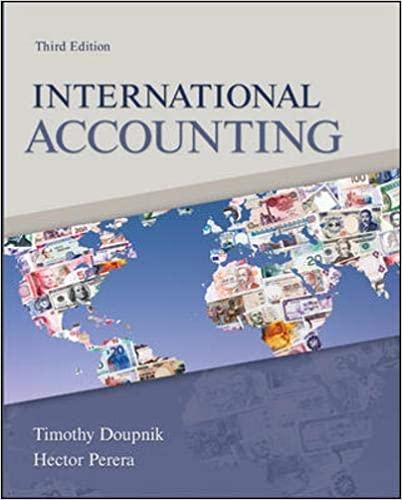Question
Green Mountain Coffee Roasters, Inc. was founded in 1981 and began as a small caf in Waitsfield, Vermont, roasting and serving premium coffee on the
Green Mountain Coffee Roasters, Inc. was founded in 1981 and began as a small caf in Waitsfield, Vermont, roasting and serving premium coffee on the premises. Green Mountain blends and distributes coffee to a variety of customers, including cafes, delis and restaurants and currently has about 6,700 customers accounts reaching states across the nation. As the company has grown, several beverages have been added to their product line, including signature blends, light and heavy roasts, decaffeinated coffee and teas and herbal teas. Green Mountain Coffee Roasters, Inc. has been publicly traded since 1993
Green Mountain Coffee has a warehouse and manufacturing plant located in Wilton, Vermont where it presently employees 250 full time and part time workers. The company receives its beans in bulk from a select group of distributors located across the world with their largest supplier being Columbia Beans Co. Green Mountain Coffee also sells accessories that complement their products including mugs, thermoses and coffee containers that they purchase from their supplier Coffee Lovers Inc. In addition to selling coffee and accessories, Green Mountain Coffee uses paper products such as coffee bags, coffee cups and stirrers to distribute to their customer.
Green Mountain's accounting system consists of manual procedures supported by standalone PC's located in various departments. because these computers are not networked, they cannot share data digitally, and all interdepartmental communication is through hard- copy documents.
Green Mountain is a new audit client for your CPA Firm. as manager on the assignment, you are examining its internal controls. the revenue cycle is described in the following paragraphs.
SALES ORDER SYSTEM
The sales process begins when a customer sends a customer order to the sales clerk, who does a credit check by manually reviewing the hard-copy customer sales history records. from the approved customer order, the sales clerk then manually prepares several hard copies of a sales order, including a customer copy, a stock release, two file copies, a packing slip, an invoice and a ledger copy. the invoice, ledger copy, and a file copy, and a file copy are sent to billing department. the second file copy and the stock release are sent to Sara in the warehouse. The packing slip is sent to the shipping department. the clerk files the approved customer order in the department.
the billing department clerk reviews the source documents that she received from sales and adds prices to the invoice. using the department PC, the clerk then enters the billing information into the computer to record the sale in the sales journal. the invoice is mailed to the customer, the ledger copy is sent to AR Clerk in the accounting department, and the file copy is filed in the billing department. at the end of the day, a journal voucher is printed from the PC and sent to Vic, the general ledger clerk.
Sara in the warehouse uses the stock release and file copies to pick the goods from the shelf. she files the file copy in the warehouse. Guided by the information on the stock release copy, she then updates the digital inventory subsidiary ledger from the warehouse personal computer. next, she sends the stock release copy, along with the goods, to the shipping department. at the end of the day, Sara prepares a journal voucher from the PC and sends it to the General Ledger clerk,
The shipping clerk reconciles the stock release copy with the packaging slip from sales. He then manually prepares a hard copy bill of lading and record the shipments into the hard copy shipping log. The Bill of Lading, packaging slip, and goods are sent to the carrier and the stock release copy is filed in the shipping department.
in the accounting department, relevant information taken from ledger copy (sent from billing) is entered into the computer to update the AR record. A summary (end of day) is sent to the Vic. the general ledger copy is then filed in the accounting department. Vic reconciles the AR summary with journal voucher and then updates the digital general ledger from the department PC. All documents are then filed.
CASH RECEIPTS SYSTEM
The mailroom clerk receives the checks and remittance advices from the customer. he reconciles the check with the remittance advice and prepares 2 copies of remittance. the check and a remittance list are then sent to John, in the AR department. John uses the PC to process the cash receipts, update the cash receipts journal and prepare a journal voucher and 3 deposit slips. the journal voucher is sent to Vic, the general ledger clerk. the checks and 2 deposit slips are sent to the bank to be deposited in to green mountain coffee's account. the third deposit slip and the remittance list are filed. the second remittance list and the remittance advices are sent to Mary, another AR Clerk, who, using the same PC, updates the AR Subsidiary ledger and prepares account summary, which is sent to Vic. the remittance list and remittance advice are then filed. Vic uses the Journal voucher and the account summary to update the general ledger. these 2 documents are then filed.
REQUIRED:
a. Create a Data Flow Diagram of the current system
b. Create a System Flowchart of the existing system.
c. Analyze the Internal Control weaknesses in the system. model your response according to the 6 categories of Physical comtrol activities specified in COSO,
d. Prepare a system flowchart of a redesigned computer- based system that resolves the control weaknesses you identified.
Step by Step Solution
There are 3 Steps involved in it
Step: 1

Get Instant Access to Expert-Tailored Solutions
See step-by-step solutions with expert insights and AI powered tools for academic success
Step: 2

Step: 3

Ace Your Homework with AI
Get the answers you need in no time with our AI-driven, step-by-step assistance
Get Started


